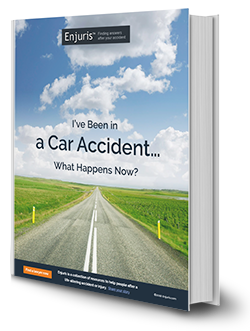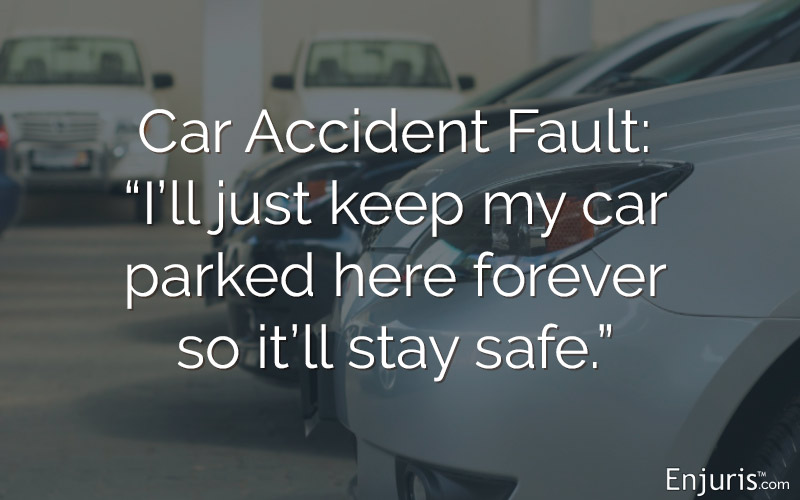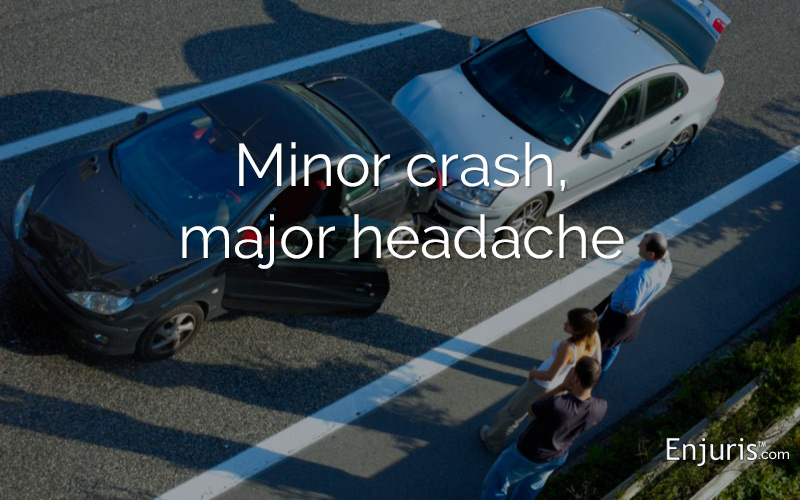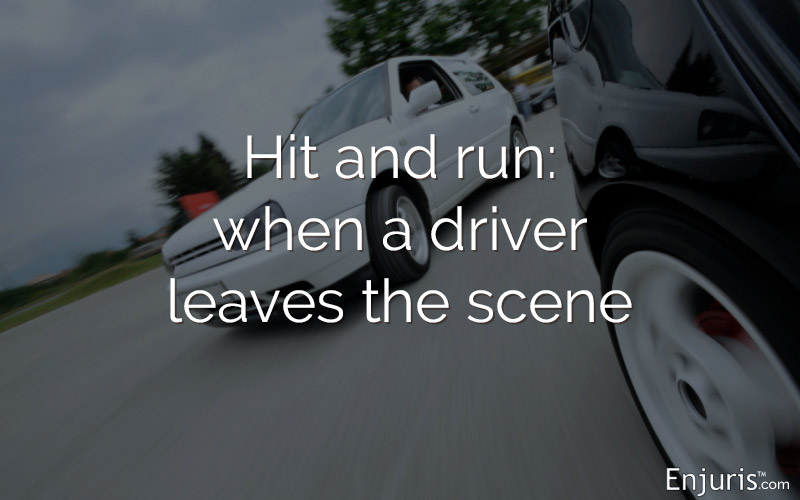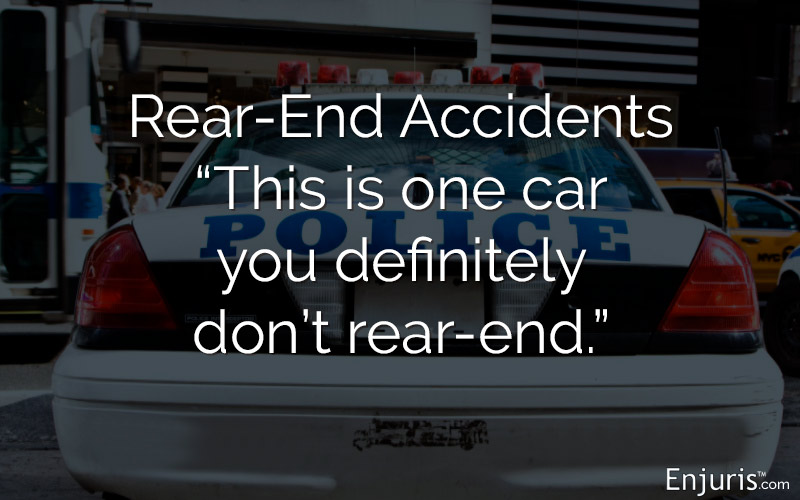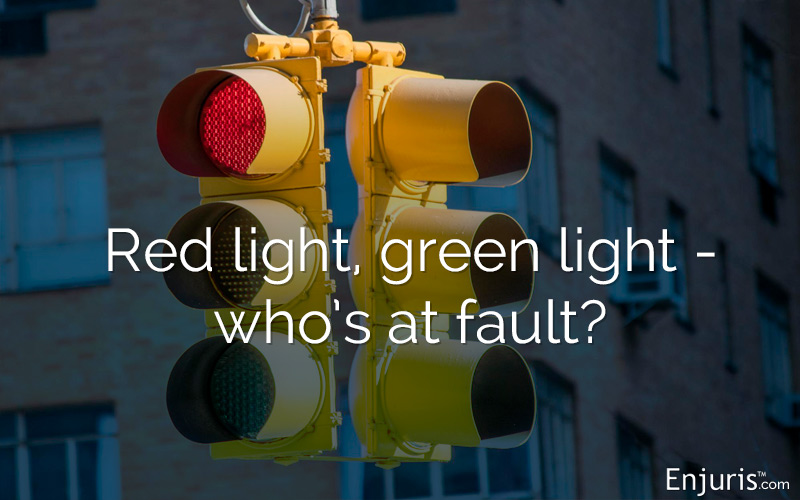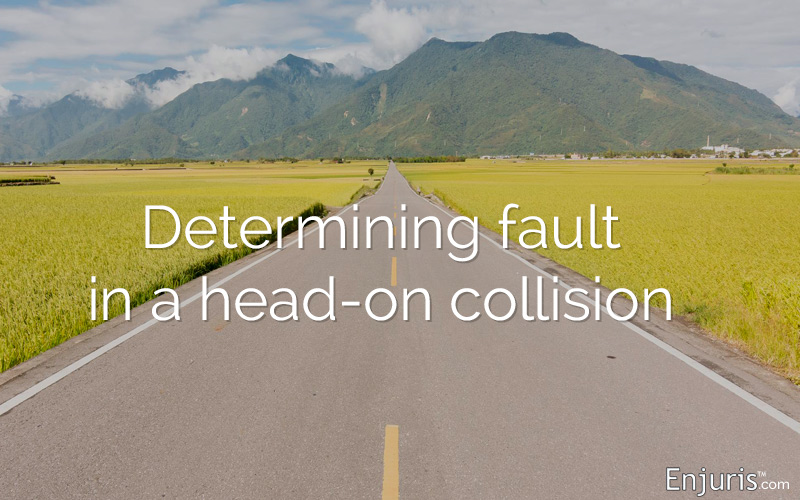How (and when) to file a lawsuit if you're injured in a car accident
The District of Columbia (Washington, D.C.) is designed on a grid. The U.S. Capitol is the center and the grid radiates out with north/south streets numbered and east/west streets lettered. In addition, the city has 36 roundabouts.
A study by the Insurance Institute for Highway Safety (IIHS) found that roundabouts are safer than traffic signals and stop signs. A driver is forced to proceed slowly through a circle, and the most common types of intersection collisions — right angle, left turn, and head-on — are less likely to happen. (source)
Washington, DC traffic statistics
The District of Columbia had a population of 705,749 in 2019. Residents traveled 3,756 vehicle miles that year. There were 23 traffic fatalities—or a rate of 3.3 deaths per 100,00 residents, which was a lower rate than any state in the U.S.
The states (and district) with the 10 lowest fatality rates in 2019 included:
| State / district | Traffic fatalities in 2019 | Deaths per 100,000 population | Deaths per 100 million vehicle miles traveled |
|---|---|---|---|
| District of Columbia | 23 | 3.3 | 0.61 |
| Massachusetts | 334 | 4.8 | 0.51 |
| New York | 931 | 4.8 | 0.75 |
| Rhode Island | 57 | 5.4 | 0.75 |
| New Jersey | 559 | 6.3 | 0.71 |
| Minnesota | 364 | 6.5 | 0.6 |
| Washington | 519 | 6.8 | 0.83 |
| Connecticut | 249 | 7 | 0.79 |
| New Hampshire | 101 | 7.4 | 0.73 |
| Vermont | 47 | 7.5 | 0.64 |
Source: IIHS Fatality Facts 2019, state by state
It's important to note that this data should be taken in context, considering that D.C. is a city district and not a state—which serves to account for the low fatality numbers compared to largely populated states like New York and New Jersey. Naturally, D.C. and smaller states (such as Rhode Island) will have fewer accident deaths.
A better comparison is the "Deaths per 100,000 population" column, which provides a clearer picture of the crash fatality rate. In that measure, D.C. still ranks as having the lowest fatality rate.
The D.C. Department of Motor Vehicles says there are nearly 450,000 drivers registered in the District, but this area is unique. A significant number of people who spend time within the District for work, school, or other reasons regularly commute in from neighboring states. In addition, tens of millions of people visit D.C. each year and many arrive in their own vehicles.
Even though D.C. doesn't have as much of a residential population as large cities like New York City or Los Angeles, it is home to some of the worst traffic in the country. While lots of people travel the city in their own private vehicles, there's also a lot of traffic from taxis and ride-sharing vehicles like Ubers or Lyfts.
That means plenty of potential for a car crash. Fortunately, most are fender-benders or minor accidents that result in vehicle damage and minor personal injury, if any.
If you are involved in a car accident, you should know the laws specific to the District and how to handle insurance claims and a personal injury lawsuit, if necessary.
Washington, D.C. no-fault car insurance laws
Each state (including the District) has either a no-fault system or a fault system for car accidents.
The first thing that will be important after a collision is to determine who's at fault — in other words, who caused the accident. Sometimes it's clear because a driver made a mistake or was reckless. In other circumstances, it's less clear and requires significant accident investigation and reconstruction to determine exactly what happened.
In the majority of states, the driver who caused the accident is responsible for paying the costs of the injured parties' damages. If the insurance companies can't reach an agreement, the injured plaintiffs may file a lawsuit against the at-fault driver.
This can include expenses for medical treatment, lost wages, and other costs related to the accident.
What is Personal Injury Protection (PIP) insurance?
Personal Injury Protection (PIP) insurance covers your medical treatment after an accident injury. Insurance companies are required to offer no-fault PIP insurance to D.C. drivers, in addition to your required liability coverage. However, you're not required to purchase it.
Although it's optional, PIP insurance is important.
In Washington, D.C., PIP covers:
- Medical and rehabilitation expenses up to $50,000 per person
- The insurer must offer a $100,000 coverage option
- It includes the person named in the policy, their vehicle occupants, and the occupants of any vehicle they are driving at the time of the accident
The major benefit to PIP is that if you're injured in an accident, your medical bills can be paid right away, rather than waiting for the insurance company to determine who was at fault.
However, PIP does not cover lost wages or pain and suffering. It's solely for medical expenses.
When to submit a no-fault insurance claim
After an accident in the District, you have 60 days in which to elect to use your no-fault option or to file a claim against the at-fault driver. If you choose no-fault, you are not permitted to submit a claim against the driver later.
There are 2 exceptions, however:
- If your medical costs exceed the amount of PIP coverage, and
- If you suffered a significant impairment.
A "significant impairment" is a permanent impairment, scarring, or disability that lasts 6 months or longer. If you meet these criteria, you may file a claim on your own PIP policy and a claim against the at-fault driver's policy.
Again, though, this must be filed within 60 days of the date of the accident.
Contributory negligence fault system in Washington, D.C.
Each state (and the District) follows 1 of 4 fault systems. These laws determine how much a plaintiff can recover in an accident where the plaintiff shares some responsibility for the injury.
But wait… you just said that D.C. follows no-fault rules and a plaintiff can receive benefits from their own insurance company, regardless of who is at fault!
Yes, both are true.
You can make a claim for PIP (no-fault) medical benefits from your insurance company. Because it's no-fault insurance, your claim should not be denied because of contributory negligence. However, you would not be able to recover damages in a lawsuit because of this negligence standard.
Example of pure contributory negligence for a D.C. car accident
Defendant Diana picked up a friend at Washington Union Station and was planning to drop them off at a hotel near the U.S. Capitol. She drove through Columbus Circle and proceeded up Louisiana Avenue NW. However, the friends decided to take a detour and grab a bite to eat near Stanton Park. Diane turned left onto North Capitol Street NW in order to cut toward D Street. As she merged from North Capitol Street onto D St., Diane failed to look to her right and she didn't see Plaintiff Pete approaching in his car from that direction.
Diane's and Pete's vehicles collided at the merge intersection. Both had damage to their cars and suffered injuries that required some medical treatment (including Diane's passenger).
Although Diane was clearly liable because she merged without looking to her right, it was discovered that Pete was taking a quick glance at an incoming text on his phone at the time they collided.
The insurance investigators determined that if Pete had not been looking at his phone, he would have seen Diane move onto D St. and could have braked in time to prevent a collision. Therefore, Pete was found 20% liable for the collision.
Pete was able to claim benefits under his no-fault PIP insurance but could not make a claim against Diane's insurance (or file a lawsuit) for the amount of money he paid out of pocket that was above the maximum paid by his insurance policy.
You are a customer of an insurance company, but you're not a client. You've already paid your premiums to have insurance, and the insurance company's profit is based on paying out less in settlements than what it takes in from premiums. Therefore, your own insurance company will look for any reason to deny your claim because that's how it makes a profit.
By contrast, most personal injury lawyers work on a contingency basis. That means they don't earn money unless and until you receive a settlement or verdict payout. Your lawyer's role is to review and analyze the evidence in order to minimize your liability for the accident. Since any liability means you can't recover damages, your lawyer's expertise will be particularly important in a pure contributory negligence jurisdiction.
Statute of limitations (time limits) for car crash cases
If you need to file a lawsuit for a car accident in DC, you have 3 years from the date of the accident in which to do so. You're also required to provide written notice to the defendant's insurance company when a claim is filed.
10 most common causes of car accidents
The reason we drive or ride in a car is usually because we have somewhere to go — and we want to get there quickly. In today's world, there are so many distractions — it's not just mobile phones (although those are ubiquitous and dangerous when used while driving). It's also the general hurry of our lives. We're busy, so we eat breakfast in the car on the way to work, we see a gathering happening outside and crane our necks to read the signs, we get lost in thought about what we need to do.
In D.C., there's also often the possibility of an unexpected detour or slowdown because of a presidential motorcade.
But distracted driving is a major problem and one of the most frequent causes of a car accident.
Here's a look at the top 10 causes of car accidents:
- Distracted driving. Distracted driving is a serious problem. As people become more and more reliant on cell phones for maps, podcasts, music, traffic reports, and other functions, there is more and more reason why they feel that they "need" to check their phones. But you should never, ever handle your phone or any electronic device while driving. Other distractions can include eating, passenger behavior, personal grooming, or any other behavior that takes your mind, eyes or hands off driving.
- Drunk driving. You're not allowed to drive if your blood alcohol content (BAC) is 0.08% or higher. If you're under the influence of alcohol, drugs, or some medications, it can severely affect your driving and raises your risk of causing an accident.
- Aggressive driving. You've likely heard of "road rage," which is when a person becomes so angry at another driver that they might bully or even physically harm someone on purpose because they're annoyed at something about their driving. But there are other kinds of aggressive driving that don't necessarily involve anger at a specific individual. Some drivers might be impatient and speed or swerve around cars they think are driving too slowly, make unsafe lane changes, or behave recklessly in some other way that could result in an accident.
- Speeding. Some speeding is aggressive, and some is just carelessness. You might speed because you're in a hurry or running late, but you shouldn't. Speeding doesn't get you to your destination any faster if you crash. And when you speed, you have less time to react to a traffic situation in front of you and less time to stop if necessary.
- Reckless driving. Similar to aggressive driving, reckless driving is any kind of action behind the wheel that's unsafe. It might be speeding, weaving, dodging other cars, failure to stop at lights or stop signs, or any other number of aggressive driving practices that break road rules or are unsafe.
- Inexperienced drivers. Your teenager might be the most responsible kid around, and they might care a lot about following road rules, driving at the correct speed, heeding stop lights and signs, and doing everything "right." But younger drivers are inexperienced. That lack of experience could cause even the most careful driver to misjudge the speed of an oncoming car, poorly execute a turn, or make other mistakes that result in an accident. And, some teenagers are more likely to take risks that a more experienced driver wouldn't. Statistically, younger male drivers are most likely to make risky driving decisions.
- Tailgating. Tailgating is when a driver follows too closely behind the driver in front of them. Some tailgating is aggressive, but sometimes it happens because someone isn't paying attention or doesn't see the practice as dangerous. When traveling 55 mph, you should leave 16 car lengths (which is about 243 feet) between your vehicle and the car in front of you. Tailgating is dangerous because when you're too close to another vehicle, you don't have enough time to stop if you need to do so quickly.
- Weather conditions. When the weather is extreme, it's best to stay off the roads when you can. But when that's not practical or realistic, exercise caution and drive slowly.
- Failure to obey traffic laws. Traffic laws are more than just stopping at red lights. Following the speed limit, staying in your lane, passing bicyclists safely, and yielding to pedestrians are a few of the many necessary rules for safe driving. Be familiar with the traffic laws in your area and obey them to reduce your risk of a collision.
- Failure to stop at a red light or stop sign. Although stopping for stop signs and traffic lights are part of following traffic rules, they're also among the ones drivers break most often. Even if you think you're driving through a "quiet" intersection, you should stop completely at stop signs and lights.
Being aware of stop signs and traffic lights is particularly important in D.C. where there are so many tourists and visitors. Drivers and pedestrians who aren't familiar with the city will probably be distracted by their navigation systems, so they might not be paying close attention to traffic.
8 steps to take after a car accident in the District of Columbia
- Stop, then move your car. If you've been in an accident, District law requires that you stop your car and move it out of the flow of traffic, but still keep the vehicle as close to the crash site as possible. Call 911 if necessary, and you must remain at the scene until a police officer arrives.
- Check for injuries. It goes without saying that it's important to check on your physical condition after an accident. If you're injured and can't move or leave your vehicle safely or without further injuring yourself, then don't. Wait for assistance to arrive. But if you can move around, check on your passengers and then anyone else involved in the collision.
- Call for help. Even if the accident is minor, you should call the police. District law requires that you must report a crash within 5 days of any accident involving property damage of more than $250. An accident report can help your legal claim because it will record the facts and conditions surrounding the scene. The police will also be able to review evidence like tire tracks, damage to the vehicles or other property, weather conditions, and other factors to determine what caused or contributed to the accident.
- Gather witness information. Witnesses are important. The police report should include some witness contact information, but it might not get everyone. Often, the police are most concerned with securing the scene, taking care of medical needs, and minimizing traffic disruption. But most well-meaning witnesses and good Samaritans who might stop to help at an accident will leave once they see that first responders have things under control. That's why, if you're able to catch the witnesses before they leave the scene, try to get their contact information yourself.
Enjuris tip: The second aspect to gathering witnesses' contact information is finding the "unseen" witnesses. If the accident happened near a home, business, in a parking lot, or at an intersection, there's a possibility that it might've been caught on surveillance video. But be aware that many surveillance videos are only saved for a short time unless there's a reason to keep them longer. So, it could be very important to check with anyone nearby who might have a recording of what happened.
- Take accident scene photos. Accident scene photos can be among your best pieces of evidence. They can show exactly how much damage occurred, what the weather was like, the position of street signs and signals, and other factors that might be essential to proving your case.
- Get a medical examination. You might think you weren't injured or that your injuries are so minor that they don't require treatment. Maybe that's true, but you want to be checked by a medical professional, regardless. After an accident, there's the possibility that you suffered injuries that you don't notice right away. Symptoms might appear days or even weeks later. If you wait to visit a doctor until symptoms appear, it might be difficult to prove that they're related to the accident. For this reason, it's crucial that you visit a medical provider such as your own physician, an urgent care facility, or a hospital immediately following an accident.
- Call your insurance company. Even if you don't want to make a claim against your insurance policy, you still should report the collision. There are risks and benefits to paying out of pocket for a car accident and avoiding the insurance company. Sometimes you learn that the damage to your car is more than expected, or medical problems could pop up a few days after the collision and you'll want to use your insurance coverage. But some insurance companies won't cover an accident if it's not reported within a certain amount of time. Remember, a report isn't the same as a claim. Even if you're not planning to make a claim, you can still file a report.
- Call a personal injury lawyer. If your accident results in minor losses, you might be able to reach a satisfactory settlement from your insurance company without too much trouble. But if your accident results in serious injuries that require ongoing or future medical treatment or continued lost wages, if you share liability for the accident, or if the settlement offered by your insurance company isn't enough to cover your immediate costs, you should seek the advice of a personal injury lawyer.
- Auto Insurance Laws & Requirements for Washington, D.C. Drivers
- Pedestrian Laws & Sharing the Road in Washington, D.C.
- Washington, D.C. Bike Laws and Recovering Costs After an Accident
- Washington, D.C. Bus Accidents & Injuries
- Washington, D.C. Distracted Driving Injuries & Lawsuits
- Washington, D.C. Hit and Run Laws
- Washington, D.C. Plane Accident Injuries and Compensation
- Washington, D.C. Train Accidents & How to Receive Compensation
- What to Do After a Drunk Driving Accident in Washington, D.C.
Did you know that car accident law varies by state?
Hurt in a car crash? You may find these resources helpful
Need a lawyer?
What does an injury lawyer do?
A personal injury lawyer helps individuals who have sustained injuries in accidents to recover financial compensation. These funds are often needed to pay for medical treatment, make up for lost wages and provide compensation for injuries suffered. Sometimes a case that seems simple at first may become more complicated. In these cases, consider hiring an experienced personal injury lawyer. Read more
Common car accidents
